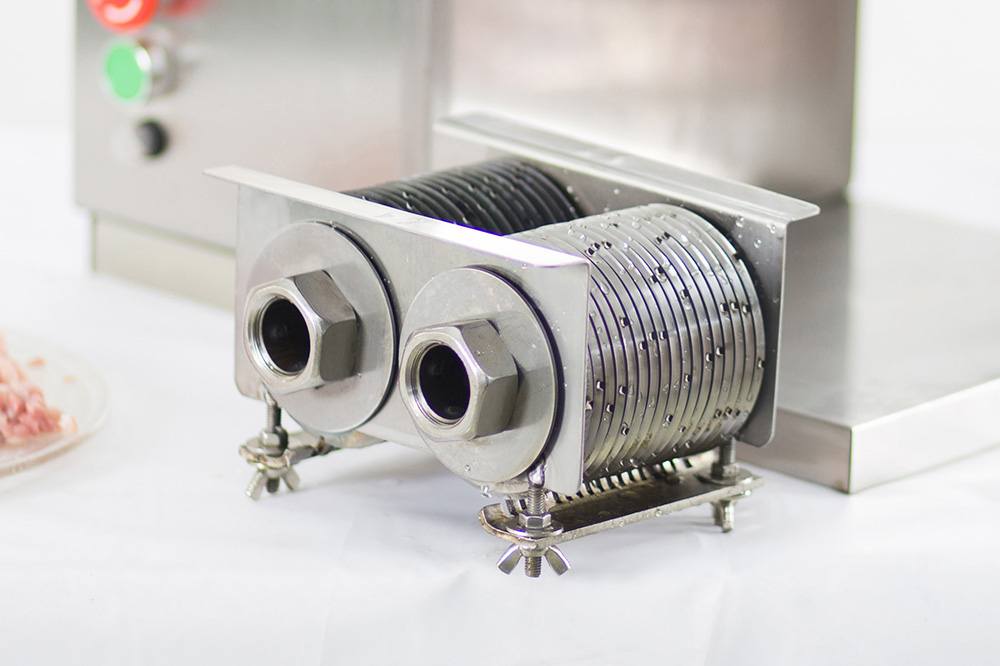The evolution of technology has significantly impacted various industries, and the food service sector is no exception. In the quest to improve speed, accuracy, and hygiene in food preparation, commercial meat cutting machines have emerged as a revolutionary tool. These machines are designed to streamline the process of cutting, slicing, and portioning meat, thereby transforming the way chefs and kitchen staff operate. This article delves into the pivotal role that commercial meat cutting machines play in the contemporary kitchen, highlighting their benefits and the ways in which they enhance the overall efficiency and precision of meat preparation.

Streamlining the Butchery Process
Traditional butchery methods, while artisanal and often revered for their craft, can be time-consuming and inconsistent. Commercial meat cutting machines introduce a level of standardization that ensures uniform cuts every time. This uniformity is crucial for dishes that require specific sizes and shapes of meat portions, ensuring that the cooking process is optimal and that the final presentation meets high culinary standards.
Boosting Kitchen Efficiency
One of the most notable advantages of commercial meat cutting machines is the significant increase in productivity they offer. These machines can process large quantities of meat in a fraction of the time it would take a team of skilled butchers using manual knives. This increased efficiency allows kitchens, especially those in high-volume restaurants and butcher shops, to meet customer demands more effectively and maintain a consistent pace of service.
Ensuring Consistent Quality
Quality control is a critical aspect of food preparation, and commercial meat cutting machines provide a reliable solution for maintaining high-quality standards. By using preset measurements and sharp, precise blades, these machines ensure that each cut of meat is consistent, leading to a better cooking experience and a more visually appealing final product.
Enhancing Food Safety and Hygiene
The use of commercial meat cutting machines also contributes to improved food safety practices. These machines reduce the risk of cross-contamination that can occur with manual cutting, as they often come with built-in sanitation features and are easier to clean and maintain. The reduced human contact with the raw meat also minimizes the risk of bacterial transfer, ensuring that the meat served to customers is as safe as possible.
Reducing Labor Intensity
Cutting meat by hand is labor-intensive and requires a certain level of skill and physical strength. Commercial meat cutting machines alleviate the physical strain on kitchen staff, leading to less fatigue and a reduced risk of work-related injuries. This not only benefits the staff but also ensures that they can focus on other critical aspects of food preparation, contributing to a more efficient and well-rounded kitchen operation.
Adapting to Modern Culinary Trends
As the culinary world continues to evolve, so too do the demands for innovative and visually appealing dishes. Commercial meat cutting machines are versatile and can be adapted to create intricate cuts and designs that elevate the presentation of dishes. This adaptability allows chefs to experiment with new techniques and keep up with the ever-changing trends in the food industry.
Conclusion
In conclusion, the integration of commercial meat cutting machines into the modern kitchen has brought about a transformative shift in the way meat is prepared. These machines enhance efficiency, ensure consistent quality, and improve food safety standards, all while reducing the labor intensity associated with traditional butchery methods. As technology continues to advance, there is no doubt that commercial meat cutting machines will continue to play a vital role in the evolution of the culinary arts, pushing the boundaries of what is possible in the realm of food preparation.